
Como if Borges himself had designed one of his literary delusions, Made, FAS Arabic, is a city essentially mirror. An apocryphal legend says that the name comes from the mirror image of an impossible city that had risen earlier in the same site, SAF (Zef), that no one, except the fevered imagination of a chain of local scholars, never echoed.
But apart from the historical chronicles legend speak of a double city whose two faces facing specularly arise, wall against wall, strenuously anti climbing banks of the same river, after a mythical foundation, also speculate otherwise occurring, almost simultaneously across the Strait of Gibraltar, Cordoba and a closely related.
I speak of a confusing time, Nebula and lack of means of contemporaneous authoritative interpretation, whose first lights are the work of authors who wrote one or two centuries later. So the interpretation of the founding of Fez and Umayyad Al Andalus Foundation share the same mythical texture, Legendary, of Israel, Rome or the many kingdoms of Southeast Asian. Finals race reborn miraculously saved later, como aves fénices, at the end of the world, like Moses as the Anastasias in the last incarnation of the myth. Therefore it is allowed Gonzalez Ferrin call the Anastasios a Rahman I and Idriss I.
It is highly suspicious that chance did share contemporarily to Cordoba and Fez same myth . That of a hero who saves a family killing and founded a kingdom far. And that myth becomes historical truth from being told in a century after chronic. And what is even more than the second city founded was peopled with exiles from the city refounded the first piece in the mirror across the Strait of Gibraltar some years before. All very suspicious. Anyone who wants to delve into the matter has just swallowed the monumental General History of Al Andalus (Almuzara) Emilio Gonzalez Ferrin. If you do not convince you at least get a good shower of reasonable doubt.
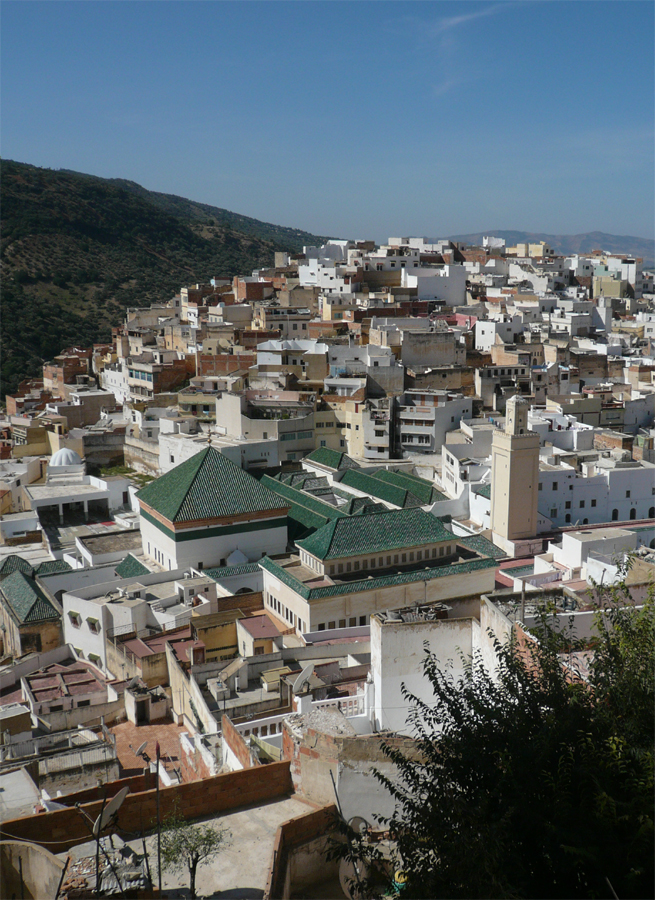
Idris I founded Fez on the left bank of the river of the same name and peopled with exiles from the suburb revolt occurred a few years earlier in Córdoba, Cordoba refound the few years before the other anastasio, Rahman I. The official version is that it was muladíes, Christian artisans who inhabited the left bank of the Guadalquivir. Strange also that they were required by an enlightened founder of a Muslim city. Again Gonzalez Ferrin succor us with your questions and puts us in the eyes contradictions: Islam probably had not yet been established as a mature religion, but who was trying to stick his head in the tens unit heresies facing the imperialist trinitarianism Byzantine. Although Arabic had already risen as cultural language in place of Greek and Latin. And we are in the year 800.
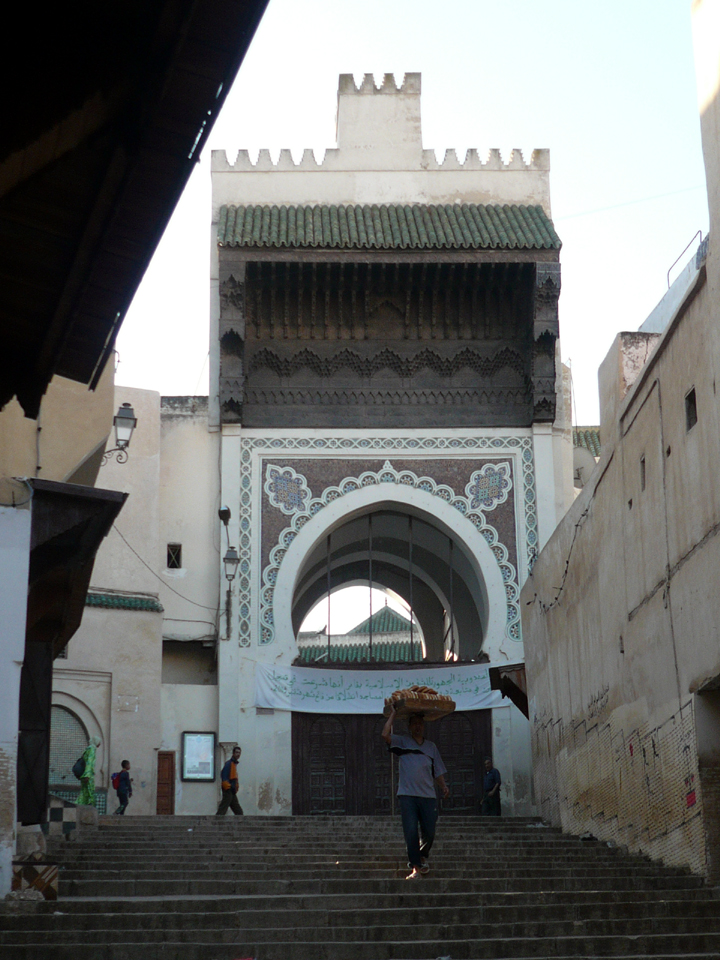
Immediately after, opposite the city of Cordoba arises another city repopulated with exiles Kairouan, that climbs along the right bank of the river. That's when cities are facing will go on to become one neighborhoods: the Andalusians and the karaouiyines. With aljamas, largest mosques, competing in volume and purity of the call to prayer. It still is. Crossed by two most beautiful main streets leading to the two doors: Bab Futuh in Andalusians and Bab Bou Djeloud in the qaraouiyines that pierce the wall at the top of both sides.
Mulay Idris was buried near Volume Roman foundation city where he lived and his tomb is the holiest place in Morocco, around which grew a city that bears his name.. His son Idriss II which was hosted the qaraouiyines and his tomb is venerated near the Djama’a Al Qaraouiyine. The Cordoba Abd ar-Rahman never to be found within the enclosure palatal. And the memory of its exact location was lost forever after the conquest of the holy warrior king.
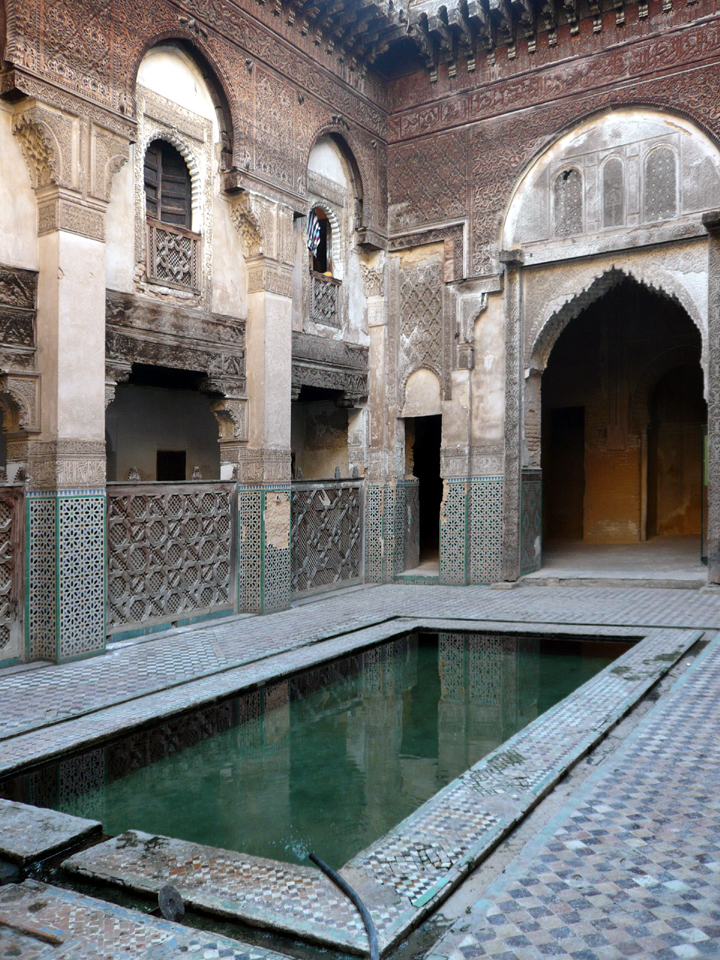

The Quarter Andalusians today is the least visited by mass tourism and really lacks the monuments of his brother Qaraouiyin, but also continues to be fascinating to wander through its streets or around the block where its two main monumental attractions; the Great Mosque and madrasah Sahridj. The other two monuments are in ruins neighborhood, Lights Mosque (Djama'a al Anuar), the only original founding, by self Mulay Idriss (I) and If meth to S'baiy. The Al Djama'a that we can see today (only the cover, clear) does not retain any of the original work of the Andalusians who built monumental and should cover the Almohads (XII century). Nearby medersas not have anything to do with the original and Andalusians and were built like all the other Fez in the fourteenth century by the dynasty meriní. La Medersa Sahridj is very careless, although an extensive restoration is expected soon. Very beautiful proportions most striking are the finely carved wooden panels typically crowned by merlons closing Cordoba patio vain.
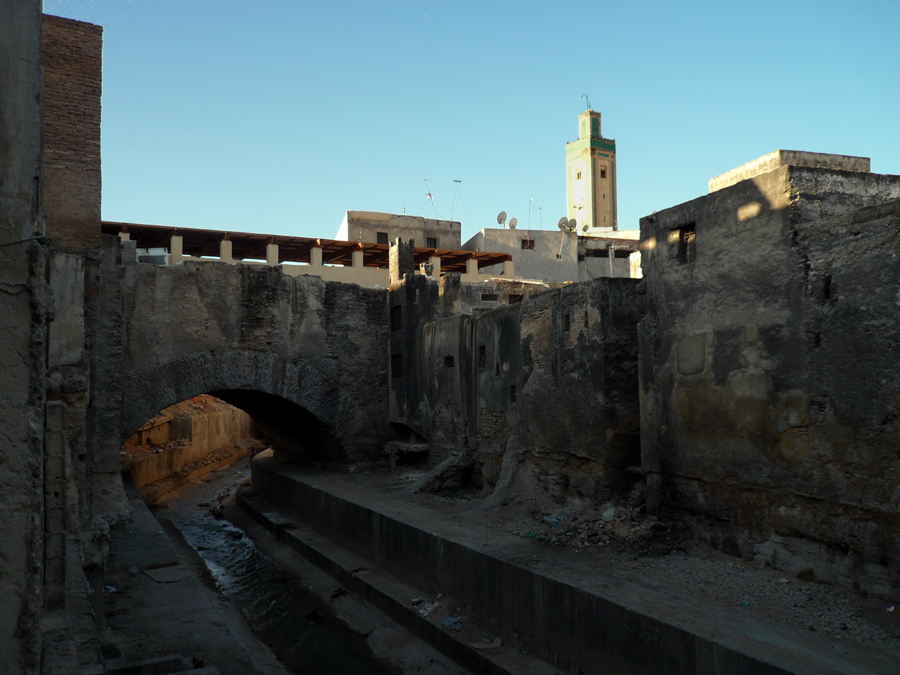
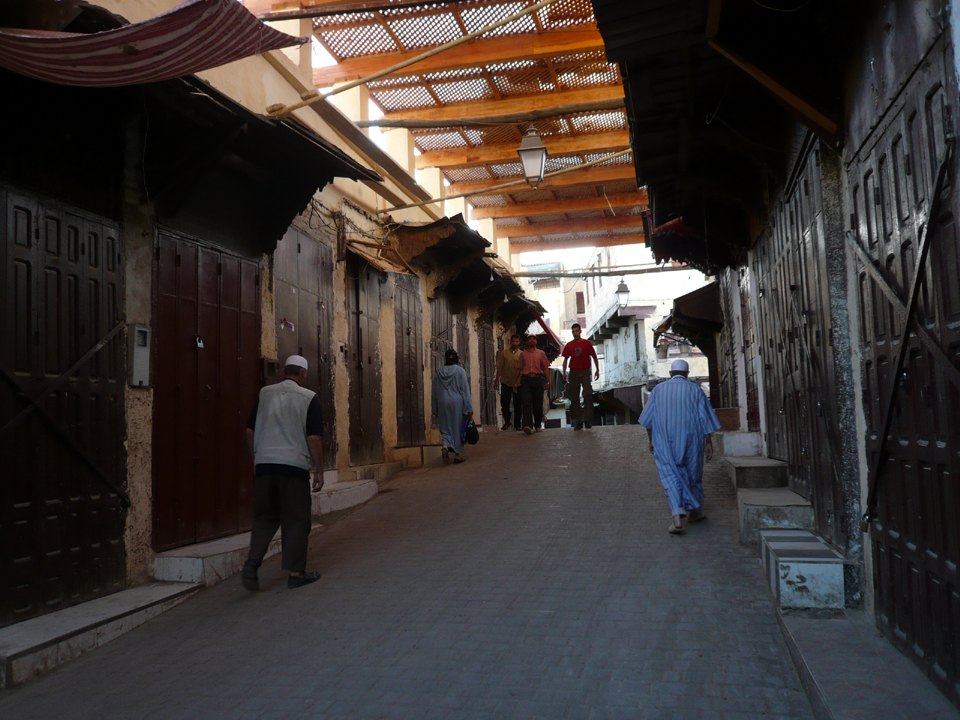
Crossing the river by the small bridge A-Tarrafin, lined with shops and its most famous Italian, work of the eleventh century, once we got to the square Seffarin, of tinsmiths, one of which stands the fronts library Qaraouiyin, especially linked with Al Andalus because it remains the Andalusian culture preserved shipwreck. The books I got out of the peninsula and get rid of the pyres of Cisneros. This is a new building which is only accessible to a small patio.
Being completely absorbed sitting on the top step of a ladder thinking of the treasures stored there and are still not by rating, but also to discover, a door opened and two investigators wearing white bathrobe, fitted mask and hands sheathed in surgical gloves on carrying two separate piles of ancient books gesturally asking me to step up the ladder. Obviously not had time to shoot camera Front, so I had to wait until they finished uploading and revolved to enter through a door that opened up. Then the captured. A second later an unexpected shiver ran me back when I was struck by the idea that any of these books may have been a manuscript of Ibn Rushd, the original Dove Necklace accounts or even tailor some of them.
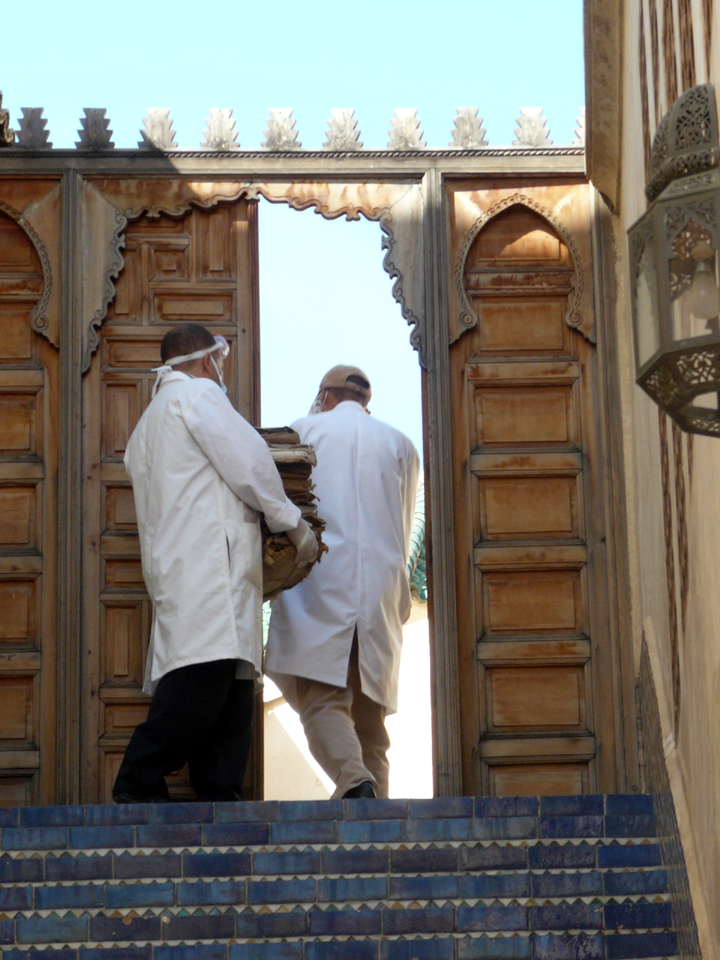



Merlones!!!
Pussy spent years looking for the damn word. I found a few decades ago and lost again. Califales merlones!!
Thanks, this is better than traveling there, at least I like almost as much. Very interesting photos pm. I understand the emotion and creepy to see those librarians privileged, ¡yatedigo! who caught them (books…).
The bridge is fascinating, no wonder that shopping Forren, because the river seems to have few views, It is more, Tie To the earmarks of a sewer. And then we complain about our bullpen Guadalquivir. Paddle veins, no one is happy with it.
Thanks Manuel.
A historian who does not remain on the books and also travels to places for finding and contrast is more than that, is a geographic adventurer, writer, culture fan of documenting and wise and makes wiser others with his knowledge of the things that studies.
Magnificent and stunning photographs and documentation as you said the Innkeeper, It is almost better to travel in situ.
NO desageres, tronko!
It is true, It seems that I'm flattering, but you do such detailed travel came from my soul. Let it then in that ” is not all bad documentation and Photo, the view of the city is the best for my taste”, Dr Harazem supongo.
In exaggerate, Madeincordóba. Is, this is the only manner in which the act of traveling is worthy of the highest consideration, very different from the usual trashy turisteo we invade. A few days ago I was asked to go to Córdoba council. “And what to do?” “How long you can see the city?” “The Mosque, In twenty minutes?, not?” “What size will be as Cuenca, not?” We'll see, Ms., First soak the city through any of the endless books or documents published on it and then, once you know where to go, go. And twenty minutes at the Mosque, but just to marvel at the time so it really means. That's who in turn tells me he did not like because it was' too old’ outwardly. And not just to the Mosque. It's not just a matter of seeing 'lot’ cross them to get a list or assess a city, a particular enclave, depending on the number of images made.
I Want to make trips Harazem.
I agree and appreciate your comments to my thoughts on the good work of Manuel historiographical, but, Sorry Dr. Mabuse, right now, and with all due respect to what touches me madeincordoba websites. Echele me to post a vistazo ” Better together”.
Hahaha. Menuda metedura de gamba, Mabuse. That's like hanging Mentar roped in house, como dice from viejo proverbio kazijistano.
HECHOENCORDOBA MADEINCORDOBA is the original and is of Chinese.
At, listen to her and you read the post BETTER TOGETHER.
And forgive, Pepe, but the Doctor has recently explored various civil and administrative codes for competitions and has even raw meninges.
And I'm still studying… God through until next week.
(But I was right to put the accent on the 'o’ de Cordóba -Obama style-).
In the VOLVERA ocurrir, I spent the Graciet, clearly, involuntarily. In my defense let you know that in a while, long, I'm high on your website and on time I receive your always interesting emilios.
No worries, there is nothing to forgive, You know that your comment was full of good intentions and also about the American accent gives the harmless character that already has. A hug
I m pretty world's faiths my love you more than all the life ami TE amooooo
hello
I saw a reference to “The Necklace of the Dove” (Cordoba masterpiece described as TREATY ON LOVE AND LOVERS) as written by Ibn Rushd and I just remember that this wonder have I understood that it was written by another cordobes, no less great than the first: Ibn Hazm (of Cordoba)
In fact it is the only book Andalusian (translated into Castilian by Emilio García Gómez) I've managed to find and read.
Data year 1022 in the town of Xativa.
If anyone can let me know how to find other works of the time
The information andalusi grateful (Castilian or translated into English, it seems that scholars were translated from Arabic to English first, so it's probably something in that language – I do not speak Arabic -)
PD article is awesome on Fez
I'm afraid you've misread, apatrida, if you mean what I commented at the end of post. I'm not saying The necklace is Paloma Averroes, but I list the books that could be worn by Moroccan operators.
As works andalusies, there really is not much. The first Andalusian work the Unique Necklace Ibn known to Rabbihi (860-940), a very unknown work, but interesting. Unknown mainly because it brings too much to the knowledge of Al Andalus, since it is a kind of catchall, a compendium of Arab knowledge of the time. A work of Renaissance essence. Someday reads dedicate a post. But first I have to find it. I do not know if they have it at the public library (page does not work today) , but I know there is an issue of 2007 which is in the House of Books. In poetry you have many things to Ibn Zaydun, Diwan Ibn el de Shuhaid, close friend of Ibn Hazm and anthologies. For things of García Gómez and Asin Palacios. I guess putting on the Google Andalusian literature find information. And there's always the library, clear.
As for the book 'Ibn Sa'id Arib, questions for you in another thread, a translation of Antonio Arjona Castro was published by the Publications Service of the Honorable Provincial de Córdoba, 1983. I have not heard that there is another edition. Anyway he speaks of an article, not a book. Good, the book is that I say and titrated:
"The book of the generation of the fetus, treatment of pregnant women and newborns ". Publications Service of the Honorable Provincial de Córdoba, 1983.